In October 1899, Archibald bought the next piece of land for his company to develop, again in south east London, about 3 miles east of Hither Green. He paid £50,000 for the Eltham Park Estate, a 334-acre chunk of farmland with a mansion house and assorted farm buildings.
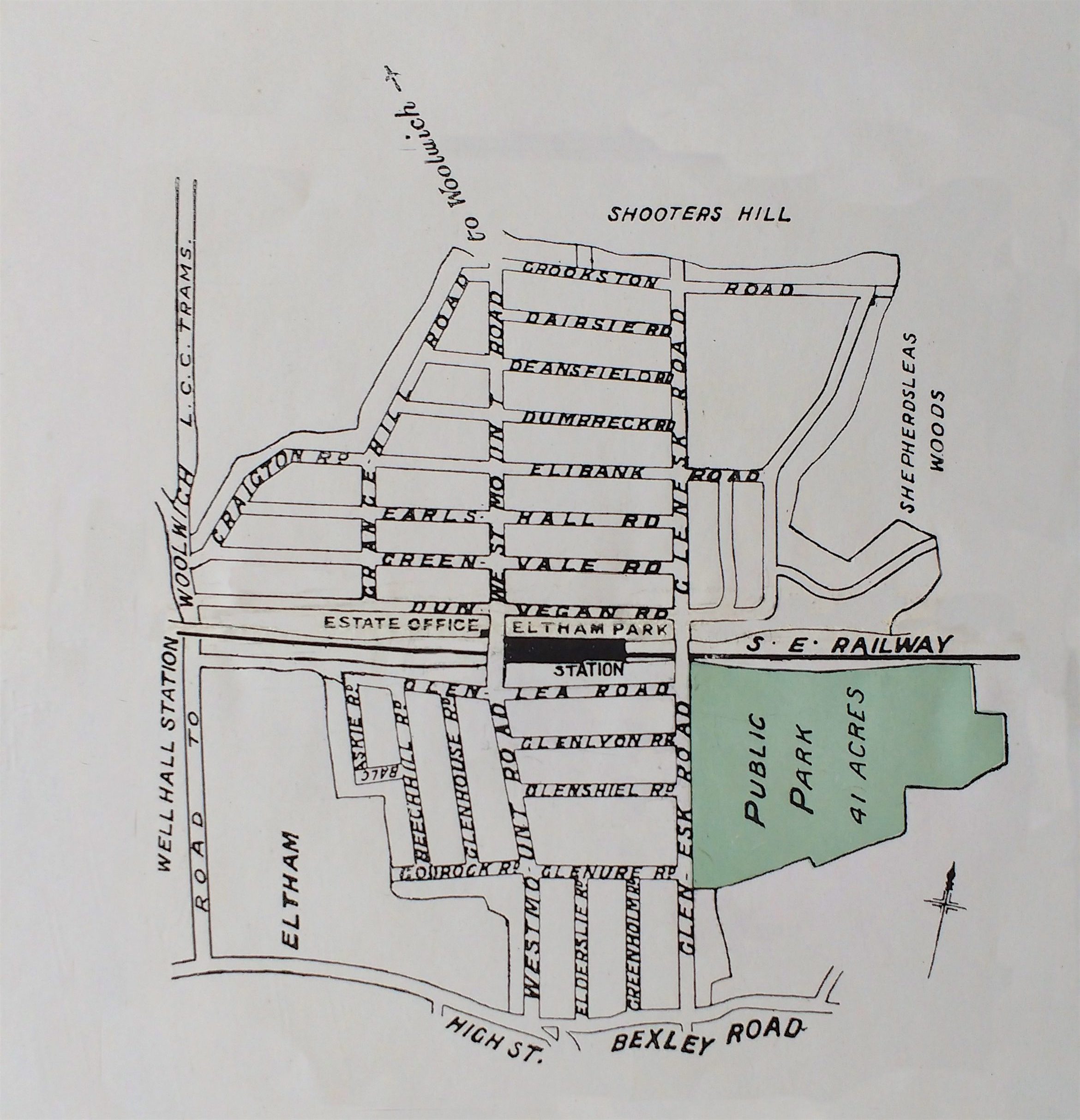
This soon meant changes for his Ilford employees, as had happened with the development at Hither Green. This time it was William Browning who had to bite the bullet and leave, when the overall Estates Manager, a Mr Stewart, came to visit from his office in Sloane Square, central London: “Mr Stewart came down to the Downshall Estate office one day and said a new Estate had been purchased by Mr Corbett in a place called Eltham, in Kent….I had to go right away…and arrived in a snowstorm. I found that Molems [a construction company] were just commencing the Westmount road, and that J.J. Bassett and Son were commencing [house] building.” Browning met up with the new Agent, Mr Mackintosh, in his lodgings, and then he set off for a look around. “At midday, feeling hungry, having started out very early that morning, I asked Sangster [the Scottish Foreman Carpenter] if he could tell of a place to get lunch. He said there was only one place, and that was usually crowded. If I cared to do so I could accompany him, as he was just going there, but it was a bit rough. I found the place crowded with workmen, and much noise and tobacco smoke in evidence. Piled up plates of meat and vegetables were quickly handed to Sangster and myself and we took our places at a table where we had squeezed in. Before I arrived I had been very hungry but when I looked at the food, the dirty condition of the plate quite took away my appetite. A huge hand was stretched out, and a navvy grabbed my plate saying “if you can’t eat it mate, I can do with another plate-full”. I let him have it, and when Sangster had finished I paid my shilling and went back with him to the Estate”.20
It was a rather inauspicious start, but actually Eltham turned out to be a good fit for Browning, and he spent the next decade selling Corbett houses and building a life there.
Yet again it was the railway that had enticed Archibald to develop in Eltham. The Bexley Heath Line had opened in 1895, the brainchild of some large local landowners whose main purpose was to increase the value of their land by making it attractive to developers. So everyone stood to gain – but in fact Corbett’s Estate was the only major suburban development on the line in the whole of its first 20 years: presumably other developers felt it was too far out to appeal to white-collar commuters.
Corbett was willing to take the gamble however, and moved quickly to do a deal with the railway company to provide ‘superior passenger accommodation’ in the form of a new station at the heart of the emerging estate (the railway line ran through the middle of his land in a deep cutting). They undertook to close the existing station, down the road at Well Hall, but found themselves contractually obliged to keep it open, so tried to back out of the agreement with Corbett. He sued, and won damages in 1905, and Eltham was obliged to have two stations instead of one. ‘Shooters Hill and Eltham Park’ opened on 1st July 1908, and was a rather swanky design that fitted with the more refined estate Corbett had in mind.
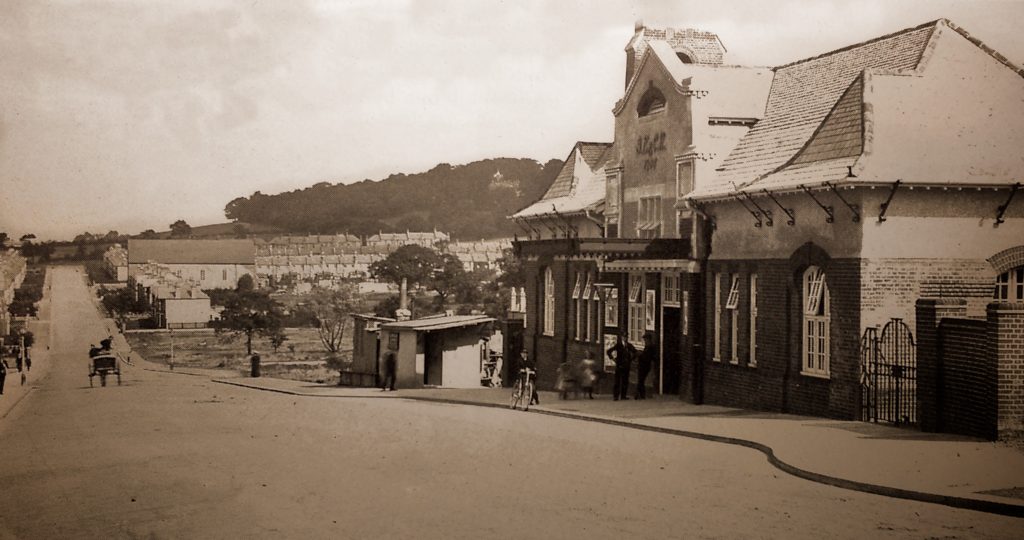
The houses generally followed the previous estate designs, but there were also some newer variations, where more fashionable Arts and Crafts influences can be seen. For the most part, they were more expensive than in Catford or Ilford, and there is a slightly more exclusive feel to ‘Eltham Park’, as it was called, and some prettier vistas than at St Germans. Clearly aiming at a slightly more moneyed clientele, the brochure boasted that ‘a considerable part of the Estate is more than 200 feet above sea level…there are several Golf links in the vicinity’. If you were buying a detached villa (with a huge 52 foot frontage), you were made aware that ‘larger gardens may be arranged for’. There was also a tennis club.
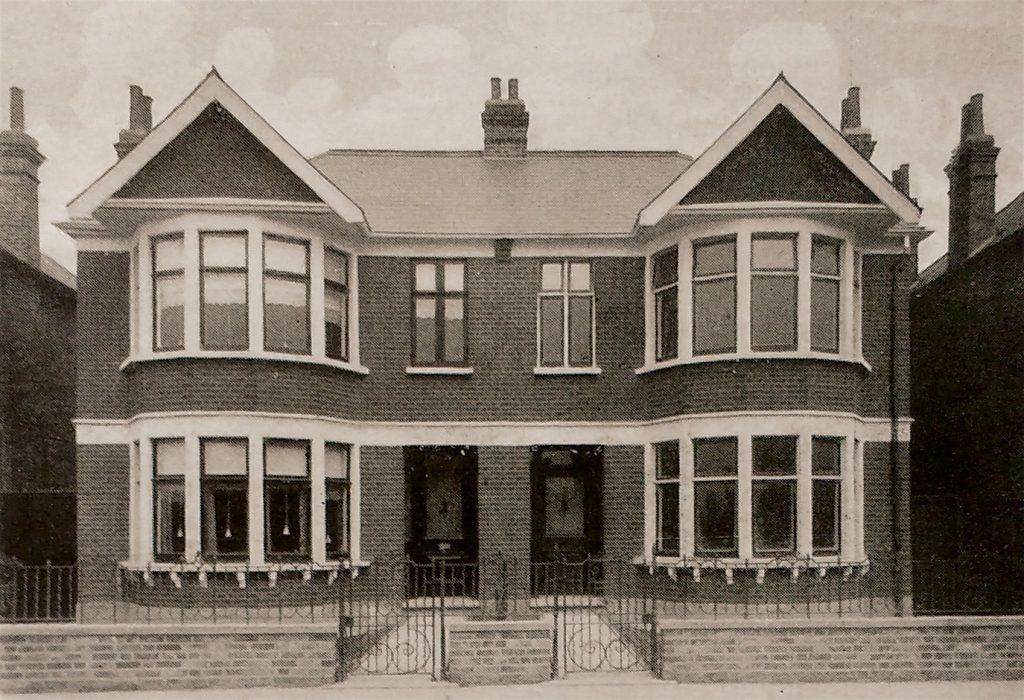
As with all houses however – no matter how expensive they are – there were issues when people moved in: what today would be called ‘snagging’. As we’ve heard, the main builders in Eltham were J.J. Basset & Son, who used to drive over from their home in Essex each afternoon to see how their houses were progressing. According to William Browning “they built very well, and refused to cut their contract prices beyond the limit that enabled them to keep to their standard of building”. Apparently Mr Stewart tried many times to get them to lower their estimates, and when this failed he brought in another firm – Messrs Picton and Hope – to provide some competition.
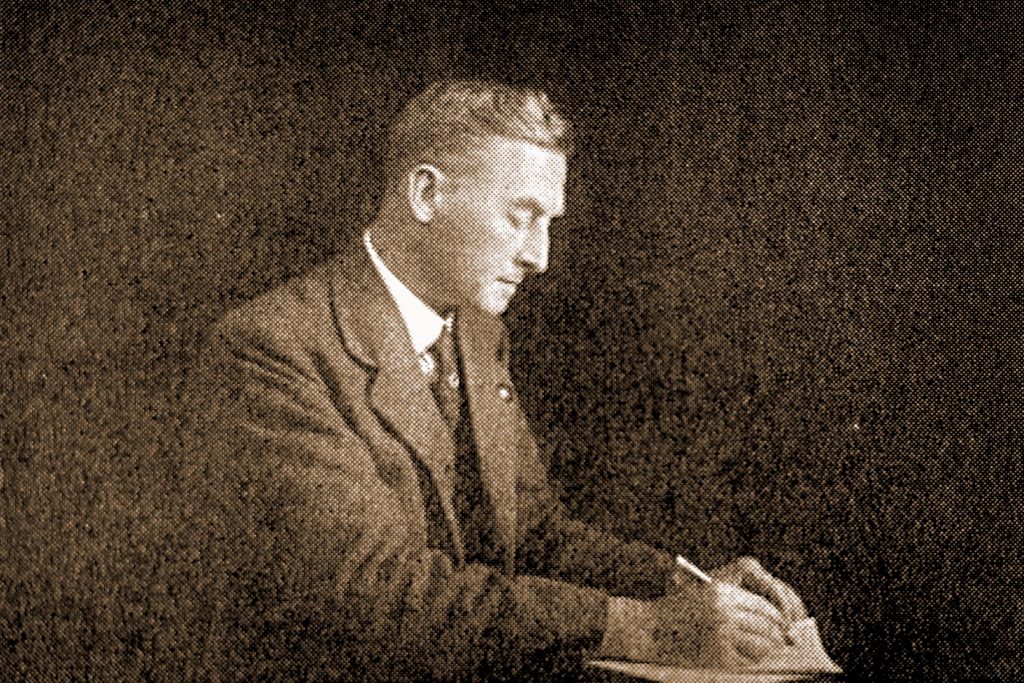
Browning recalls that he entered any snagging requests made by purchasers into the office diary, and that Bassetts sent someone round regularly for details so that they could attend to the issues. However, “Messrs Picton and Hope did not send to the office for complaints, and I had to call upon them…their work became worse and worse, and purchasers of their houses complained in so much greater degree that it became almost a scandal”. Word of the problems reached Mr Stewart who visited Browning in the estate office: “He was very upset and asked if I could not find him a list of complaints as to Bassetts’ building. I told him I could only say that Bassetts’ were regularly and methodically attended to, as had always been the case, and gave us no trouble. Mr Stewart seemed quite unaware that part of the office routine had always been dealing with all builders finishings on the estates. Some months later it was found that Picton and Hope had been building at a loss for some time. They were financially helped and then left the district, and the Bassetts continued satisfactorily as sole builders”.21
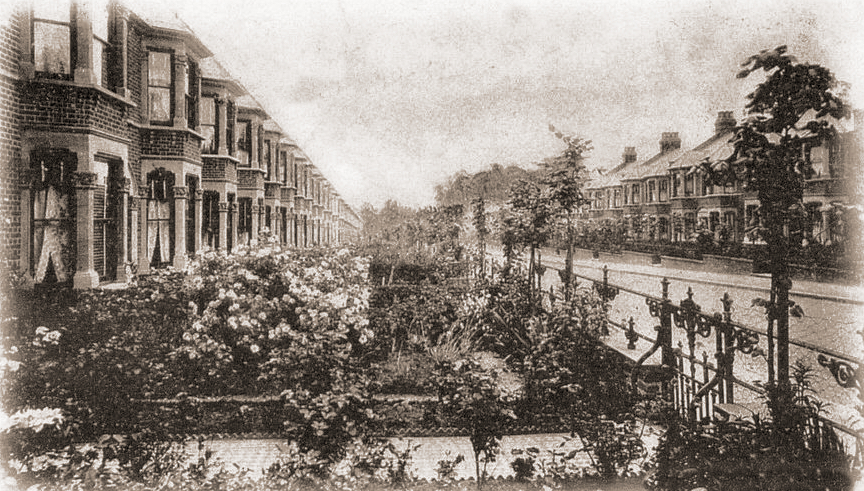
Things progressed well until the storm clouds of war started to gather and demand for new houses began to falter. The original plan had been to extend the roads (again, all with proud Scottish names) further east into Corbett’s land, but there simply wasn’t enough call for the houses, so the ‘speculator in chief’ called time on any more large-scale development and sold 41 acres to the local council, which turned it into a park (now Eltham Park South).
The falling sales were causing problems for Mr Stewart: according to Browning “as few houses were now being sold and a large part of the estate was still undeveloped, Mr Stewart encouraged small builders to apply to him direct for land, and lots of bungalows and jerry-built houses cropped up in many roads”. As the war rolled on into 1915, hundreds of wooden ‘hutments’ were erected in the northern part of the undeveloped land. These were temporary housing for the huge numbers of munitions workers taken on at the nearby Woolwich Arsenal where war production was in full flow.
The jerry-building (low-quality houses) was a first for the Corbett estates, and rather a sad way for the company to bow out, but this really was the end – there were to be no more Corbett Estates. Still, much of Eltham Park hadbeen completed, and once again, it’s a lovely place to wander around – look out for the Corbett connections in the street names: Gourock is the town where Archibald’s future wife grew up; Dunvegan is the MacLeod’s castle on the Isle of Skye; and Elderslie is supposedly the village were Scottish independence hero William Wallace was born.
Our guide to the building of the Corbett Estates, William Browning, had bowed out in 1910, after many years of diligent service, but too long spent bashing his head against the Scotland-sized glass ceiling Corbett imposed in the company. Archibald had offered him the capital to start a business in America, but he had no friends there and plenty in Eltham, so he stayed and started up his own estate agency. It was a success, and he got Bassetts to build him a detached house to his own specification on the estate, and rose to become the President of the Eltham Chamber of Commerce.